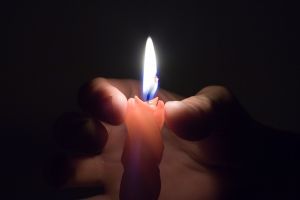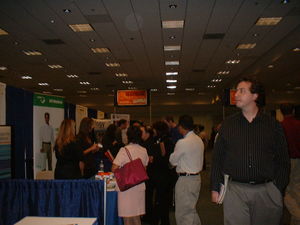In Pilgrim at Tinker Creek, Annie Dillard goes back and forth between two states: one of “stalking”, in which she gives an intense and constant attention to the things around her, and the other of an almost unaware state, in which she herself practically becomes part of the natural surroundings around her, without regard to time, in what she refers to as the present. Both states heavily differ from one another. Additionally, both these stalking and unaware states allow Dillard to become more in-tune with her surroundings, but in entirely different ways.
Throughout Pilgrim at Tinker Creek, Dillard describes numerous experiences she’s had in the past, both aware and unaware, and uses them to express the lessons she learns and closeness she obtains to nature. Dillard seems torn on whether or not self-conscious or unself-conscious is a better state to experience the world in. She values self-consciousness and even states that self-consciousness is one thing that separates us both from our creator and fellow creatures, for without it we would be less aware of our surroundings and less apt to learn about and obtain information about nature and the creatures we see around us. It is evident that Dillard appreciates learning about all different types of plants and animals while at Tinker Creek. But while Dillard values the self-conscious state, she also has numerous criticisms of it as well. She believes that being self-conscious can hinder living and experiencing the present and the now. Dillard suggests the better and ultimate state to live in, in regards to experiencing the present and the now, is that of “innocence,” or seeing the world as it is with a disregard to time; an unaware state. This innocence allows her to experience rather than learn, as innocence, according to Dillard, is the spirit’s “unself-conscious state at any moment of pure devotion to any object” and that experiencing these moments allow us to “live them as purely as we can, in the present” (Dillard 82). Ultimately, Dillard finds both the self-conscious state and the unself-conscious state necessary when experiencing, connecting, and learning about nature.
Dillard stalks certain creatures in order to witness them in their natural surroundings. Particularly, in her chapter “Stalking,” Dillard talks about her unique approach to witnessing nature in which she quietly sits and observes animals interacting with their surroundings. She watches a praying mantis lay her eggs, a muskrat feeding along the banks of Tinker Creek, a mosquito land on the back of a snake and feed off its blood. She describes the feeling it gives her and that it’s something that helps her learn and observe what’s happening around her in the natural world while at Tinker Creek. Of stalking and self-consciously witnessing nature, Dillard states, “I am prying into secrets again, and taking my chances. I might not see anything happen; I might see nothing but light on the water. I walk home exhilarated or becalmed, but always changed, alive” (Dillard 184).
Oppositely, there are moments throughout the book in which Dillard simply lets go of herself and her consciousness. One of the most memorable moments in the book, one that she refers back to often, is in which Dillard experiences this unself-consciousness in her chapter “The Present.” Dillard finds herself standing at a gas station, patting the puppy, and staring out at the mountains, losing herself in them for moments, declaring, “I am more alive than all the world” (Dillard 78). She describes this state as innocence, an unself-consciousness as opposed to a self-consciousness. When she returns from this lost, unself-conscious state, she declares, “but the second I become aware of myself at any of these activities-looking over my own shoulder, as it were-the tree vanishes, uprooted from the spot and flung out of sight as if it had never grown” (Dillard 81). It’s evident that she values these unself-conscious moments and truly comes alive in spirit and in her own writing when she experiences them.
Overall, it’s apparent that Dillard is torn between experiencing the world in two different ways. On one end of the spectrum, she’s self-conscious of the world, stalking it and taking all of it in. On the other end, Dillard let’s go of herself periodically and gets lost in her surroundings, not examining them, but becoming part of them, their colors, their scents, textures, and feelings. Dillard also does indeed say that “innocence is a better world” and “self-consciousness is the curse of the city and all that sophistication implies.” However, Dillard continues to live in a world of self-consciousness and continues to stalk her surroundings, deeming both states of self-consciousness and unself-consciousness of value to her.
I believe that Dillard, through Pilgrim at Tinker Creek, as well as the other authors we have read, gives us the correct tools to experience nature. We can’t fully experience all nature has to offer through books and readings or even come close to it. We must take from all that we read during this block a set of tools in which we apply to our surroundings and obtain our own experiences and truth and closeness to nature as we desire.
Reference:
Dillard, Annie. Pilgrim at Tinker Creek. Published: 1974.




